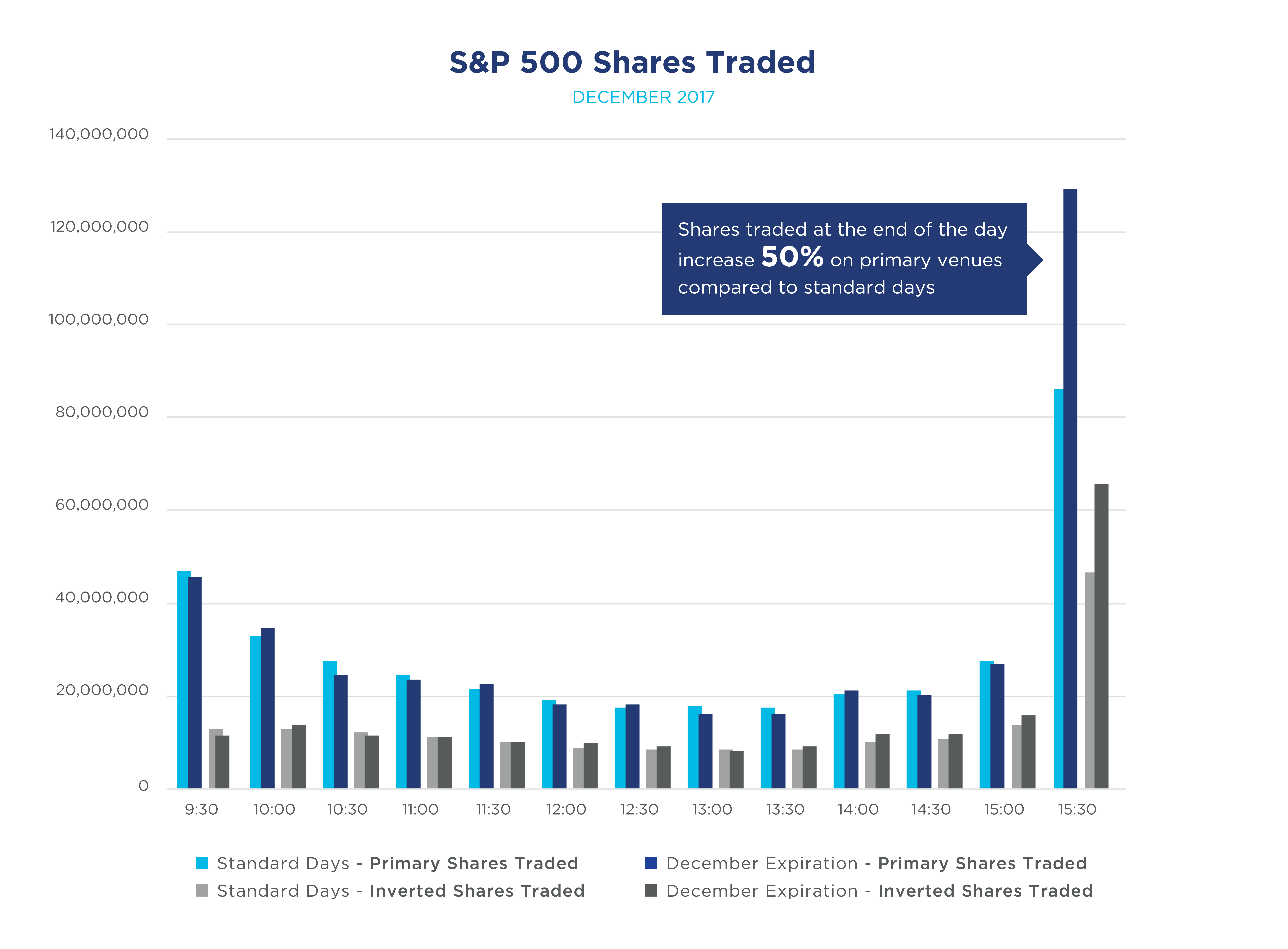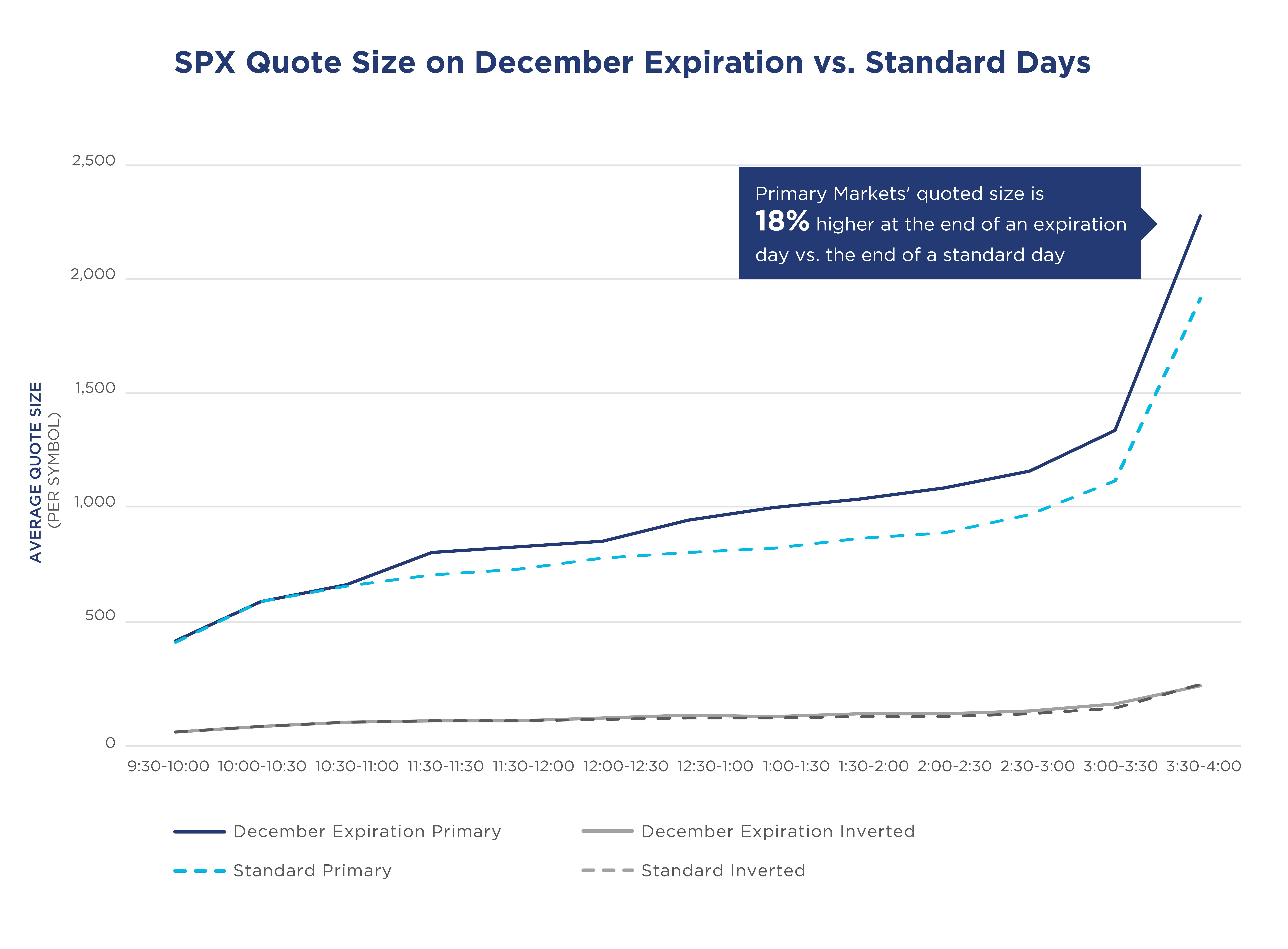March 14, 2018
Kevin Tyrell, Head of Equities Strategy and Research, NYSE
With the quarterly expiration approaching on Friday, we reviewed trading from the December expiration to see shifts in price discovery behavior. One widely-known market structure feature is the increase in volume on inverted venues at the end of the trading day, when inverted venues can approach 20% of S&P 500 volume at certain points.
However, during key trading periods such as quarterly expirations, the shares available at primary exchanges1 far exceeds that of inverted venues. We looked at the December expiration’s average quoted size at the NBBO from primary exchanges and inverted venues, and find that primary exchanges’ quoted size at the end of the day increased 38% vs. a standard day2 while inverted venues increased just 18%.
This additional pre-trade displayed liquidity results in more intra-day trading activity flocking to the primary exchanges. Primary exchanges see an increase in volume every day heading in to the closing auction, and the trend is more dramatic on event days such as an expiration. The below chart shows shares trading in the S&P 500 by time period, exclusive of closing auction volume.
This is the “liquidity begets liquidity” argument on display, with greater displayed size enticing more liquidity-seeking flow. This increasing order volume allows limit order queues to process more quickly, a topic we’ll revisit in a future post.
1“Primary exchanges” refers to trading on the listed market (e.g., NYSE trading NYSE-listed and Nasdaq trading Nasdaq-listed).
2“Standard day” represents an average of December 1st - December 22nd trading activity, excluding December 15th

